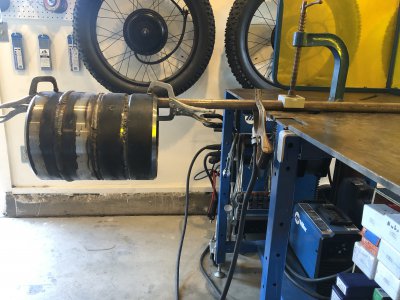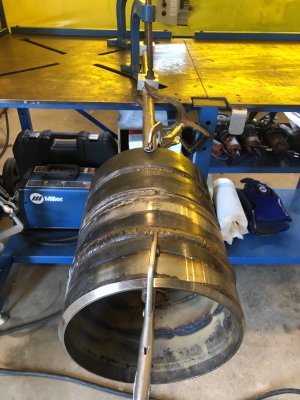Don't get hung up on clamping pressure. Tighten enough so it doesn't fall off. On the joints grind away the mill scale about 1/2 inch past the edge would help before welding. The mill scale can add a lot of contaminants. As mentioned before the gap between the 2 faces should be the electrode dia. being used for the root pass. The face of the bevel would be the rod dia. used for the root. Our high pressure welders used 6011 for penetration Then grind out any flux or crap in the weld., Next was a pass of 7018 as the filler, then a 7018 cap.
To set your gap between the pieces use an electrode that your going to use for the root pass probably 3/32 knock the flux off and and sandwich between the pieces, then tack weld to hold., then remove the spacers. This maybe difficult to do horizontally with one person , so set everything up vertically, let gravity do the work.
Just a note if your welding on your lathe be sure the welder ground is on the work, and not on the lathe, you don't want to pass current thru the lathe.
To set your gap between the pieces use an electrode that your going to use for the root pass probably 3/32 knock the flux off and and sandwich between the pieces, then tack weld to hold., then remove the spacers. This maybe difficult to do horizontally with one person , so set everything up vertically, let gravity do the work.
Just a note if your welding on your lathe be sure the welder ground is on the work, and not on the lathe, you don't want to pass current thru the lathe.



